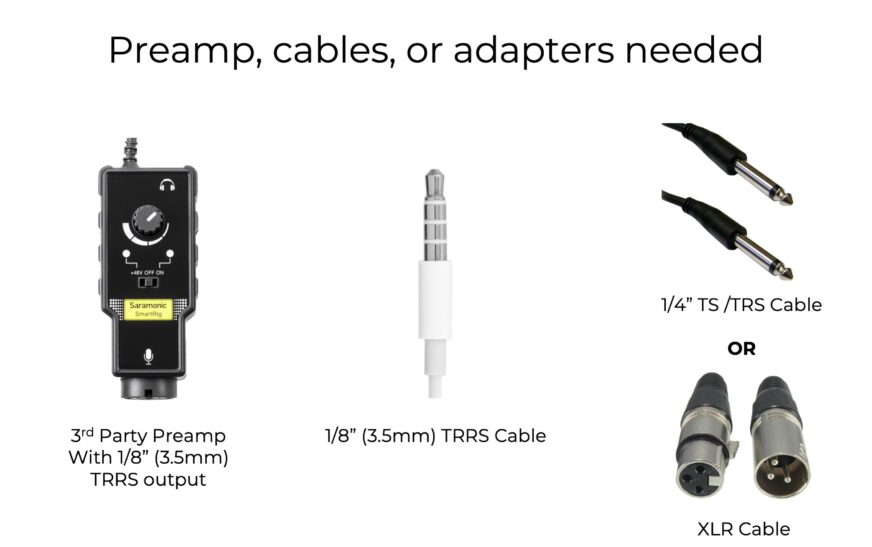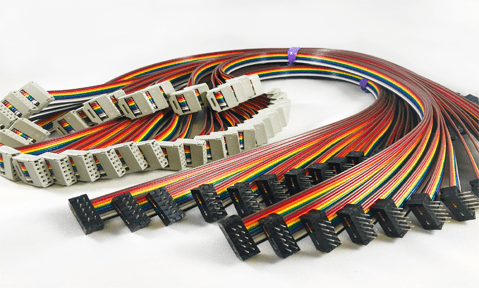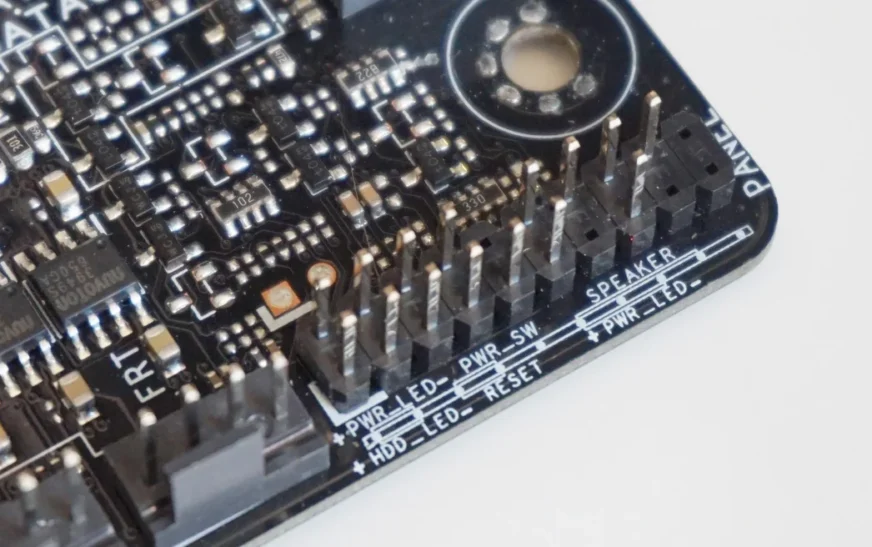Audio jacks are prevalent in the realm of technology, serving as essential connectors for a wide array of audio devices. They enable the transfer of sound between devices such as headphones, microphones, speakers, and home theater systems. This article examines the various types of audio jacks, their functions, historical evolution, applications, and anticipated future developments.
1. Introduction to Audio Jacks

Audio jacks serve as connectors that facilitate the transfer of audio signals between various devices. Available in multiple shapes and sizes, they are designed to meet diverse audio requirements and applications. These connectors play a vital role in modern technology, making it crucial for users to comprehend their different types, functions, and capabilities.
a. Significance of Audio Jacks
The significance of audio jacks is rooted in their function of enabling sound transmission. They allow for effective communication between devices, thereby enhancing the user experience in activities such as listening to music, making phone calls, and participating in voice chats. In an era where audio interactions are increasingly prevalent, the importance of audio jacks is paramount.
2. Types of Audio Jacks

1. 3.5mm Audio Jack
The 3.5mm audio jack, often referred to as the mini-jack, is one of the most prevalent audio connectors in use today. It is extensively utilized across a range of devices, including smartphones, laptops, and various audio equipment.
1. Design and Functionality
The 3.5mm audio jack is generally composed of three components: the tip, ring, and sleeve, each fulfilling a distinct role:
– Tip: Transmits the left audio channel.
– Ring: Transmits the right audio channel in stereo configurations.
– Sleeve: Functions as the ground connection.
This configuration facilitates both mono and stereo audio transmission. Additionally, the jack can incorporate extra rings to support features such as microphone input, resulting in the TRRS (Tip-Ring-Ring-Sleeve) format for devices that combine audio and microphone capabilities.
2. Applications of 3.5mm Audio Jack

The 3.5mm audio jack is frequently found in:
– Headphones: The majority of headphones utilize this standard connector to ensure compatibility with a wide array of devices.
– Smartphones: Although many contemporary smartphones have eliminated the 3.5mm jack, it continues to be common in numerous models and accessories.
– Laptops and PCs: These devices typically include 3.5mm jacks for both audio output and input.
b. 1/4-inch Audio Jack
The 1/4-inch audio jack, also known as the 6.35mm jack, is a larger audio connector primarily employed in professional audio equipment, such as electric guitars and amplifiers.
1. Design and Functionality
The 1/4-inch jack is usually designed for either mono (TS) or stereo (TRS) applications. Its design resembles that of the 3.5mm jack but is larger, providing enhanced durability for professional settings.
2. Applications of 1/4-inch Audio Jack
– Musical Instruments: Electric guitars and keyboards commonly utilize 1/4-inch jacks for connections to amplifiers or effects pedals.
– Professional Audio Equipment: Mixing consoles and studio monitors often incorporate 1/4-inch jacks due to their robust construction and superior sound quality.
c. XLR Connector
The XLR connector is a three-pin connector widely used in professional audio settings. It is recognized for its secure locking mechanism and balanced audio transmission capabilities.
3. Historical Development of Audio Jacks
1. Early Developments
The history of audio connectors is extensive, tracing back to the formative years of electrical engineering. The initial audio jacks were basic two-wire connectors utilized in telegraph and telephone systems.
2. Advancement of the 3.5mm Audio Jack
The 3.5mm audio jack rose to prominence during the 1960s, coinciding with the introduction of portable cassette players and headphones. Its small size and adaptability established it as the benchmark for audio connections.
3. Professional Audio Connectors
With the increasing demand for superior audio quality, connectors such as XLR and 1/4-inch jacks became prevalent in professional audio equipment. These connectors fulfilled the necessity for dependable connections in both live sound and studio settings.
4. Applications of Audio Jacks
1. Consumer Electronics
Audio jacks are commonly found in consumer electronics, such as:
Smartphones and Tablets: Numerous devices continue to incorporate audio jacks for headphone connections.
Laptops and PCs: These systems utilize audio jacks for both output and input, enabling users to link external speakers, headphones, and microphones.
2. Professional Audio Equipment
Audio jacks play a vital role in professional audio environments, including:
Recording Studios: XLR and 1/4-inch connectors are crucial for linking microphones, instruments, and monitors.
Live Sound Systems: Audio jacks enable connections among various components, ensuring superior sound quality.
3. Home Entertainment Systems
Home entertainment systems employ a range of audio jacks for device connectivity, including:
Televisions: RCA and optical audio jacks are used to connect TVs to soundbars and receivers.
Gaming Consoles: Consoles utilize audio jacks to connect with headsets or external speakers.
5. Installation and Usage of Audio Jacks
Connecting Audio Devices
Establishing connections with audio devices through audio jacks is generally a simple process. Below are some guidelines for effective usage:
1. Aligning Connectors
It is essential to ensure that the connector is properly aligned with the port prior to insertion. For example, with a 3.5mm jack, confirm that it is oriented correctly to prevent any potential damage to the port.
2. Inserting and Removing
When connecting an audio device, gently insert the connector into the port until it fits securely. To detach the connector, pull it out straight without twisting to avoid causing damage to the port.
Troubleshooting Common Issues
Although audio jacks are typically user-friendly, individuals may face certain challenges. Common issues include:
1. No Sound Output
Issue: There is no sound emanating from the device when connected.
Resolution: Consider the following:
– Ensure that the device is powered on and not muted.
– Confirm that the appropriate playback device is selected in the audio settings of the operating system.
– Examine the connector for any signs of damage and attempt to use a different device.
2. Poor Audio Quality
Issue: The audio quality is either distorted or unclear.
Resolution: Investigate the following:
– Loose connections: Verify that the connector is securely seated in the port.
– Damaged cables: Check the audio cable for any frays or breaks.
– Compatibility issues: Ensure that the audio device is compatible with the port in use.
6. The Future of Audio Jacks
1. Developments in Audio Jack Technology
As technology progresses, audio jacks are also undergoing significant changes. Key trends to observe include:
1. USB-C Audio Interfaces
The increasing adoption of USB-C has resulted in a growing number of devices utilizing this standard for audio interfaces. This trend streamlines connectivity by providing a unified port for charging, data transfer, and audio output.
2. Advancements in Wireless Audio Technologies
The prevalence of wireless audio technologies, such as Bluetooth, is on the rise, diminishing the dependence on conventional audio jacks. This trend enhances convenience and portability, catering to users who favor wireless options.
b. Ongoing Importance of Audio Jacks
In spite of the surge in wireless technologies, audio jacks continue to hold significance. They provide benefits in terms of dependability and sound fidelity, particularly in professional and high-quality audio settings. As long as users seek tangible connections for their audio devices, audio jacks will maintain an essential role.
7. Conclusion
Audio jacks serve as vital connectors within the realm of technology, facilitating the transfer of sound between various devices. It is important for individuals engaged with audio technology to comprehend the various types of audio jacks, their specific applications, and the correct methods of usage. As technological trends progress, audio jacks are expected to evolve, maintaining their significance in a dynamic environment. This relevance persists across consumer electronics and beyond.






